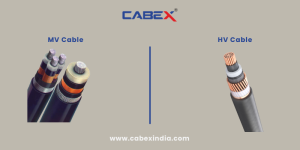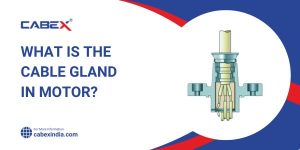Introduction
High voltage cables serve an important role in the transmission and distribution of electrical power across long distances. In today’s modern world, electricity powers almost every facet of society. The demand for dependable electricity is constant, whether it is used to power homes or drive industrial gear. However, these cables are vulnerable to a variety of threats that might jeopardize their integrity and result in costly downtime or even catastrophic failures. In this post, we’ll look at the most important strategies and approaches for securing high voltage cables to ensure an uninterrupted flow of electricity.
Understanding High Voltage Cables
High voltage cables are intended to transport electricity at voltages substantially higher than those found in standard domestic wiring. These cables are widely utilized in power transmission and distribution networks, substations, manufacturing facilities and renewable energy projects. Because of the high voltages involved, they require particular design considerations and insulating materials to prevent electrical failure and assure safe operation.
Common Risks and Threats
Before implementing protective measures it is critical to identify the most prevalent risks and threats to high voltage wires. This includes:
Electrical overload
High voltage cables can get overloaded due to excessive current flow, resulting in overheating and insulation damage.
Mechanical Damage
Physical damage from external forces such as excavation equipment, vehicle accidents, or vandalism can jeopardize the structural integrity of cables.
Environmental Factors
Cable deterioration can be accelerated by harsh environmental conditions such as excessive temperatures, dampness, chemicals and UV radiation.
Wildlife Interference
Animals, birds, and insects may make contact with high voltage cables, resulting in short circuits or insulation damage.
Protective Measures
To reduce these dangers and assure the longevity of high voltage cables, many preventative measures can be implemented:
Proper cable routing and installation.
Ensure that wires are properly routed and placed to prevent mechanical damage and inadvertent contact.
Use of Protective Conduits
Installing protective conduits or cable trays can safeguard high voltage cables from external threats while also providing additional insulation.
Insulation Monitoring Systems
Implementing insulation monitoring systems enables early detection of insulation failure or degradation, resulting in timely maintenance and repairs.
Surge Protective Devices
Installing surge protection devices helps to reduce transient voltage spikes and surges protecting high voltage cables from damage caused by lightning strikes or surges in electricity.
Corrosion Protection
Corrosion-resistant coatings and materials for cable accessories can help to reduce damage caused by external causes.
Regular Maintenance and Inspection
Regular maintenance and inspection are critical for recognizing possible faults and resolving them before they become big problems. Visual inspections, thermographic surveys and diagnostic testing can assist ensure the long-term stability of high voltage cables.
Conclusion
Protecting high voltage cables is critical to the dependability and safety of electrical infrastructure. Understanding typical risks and implementing suitable protective measures allows stakeholders to reduce downtime avoid costly repairs and maintain an uninterrupted power supply.
FAQs (Frequently Asked Questions)
How often should high voltage cables be inspected?
High voltage cables should experience frequent inspections in accordance with industry standards and manufacturer guidelines. Inspections are often carried out on an annual or semi-annual basis.
Is it possible to reapir high voltage wires that have been damaged?
Yes, depending on the severity of the damage, high voltage wires can frequently be repaired. To ensure safety and reliability, however the damage must be thoroughly assessed and repaired according to proper protocols.
Are there any laws in place to protect high-voltage cables?
Yes, numerous rules and standards, such as IEEE, IEC, and NEC, establish guidance for the design, installation, and maintenance of high voltage cables to assure their safety and reliability.
How can we prevent wildlife interference?
Wildlife interference can be reduced by placing wildlife deterrents such as bird diverters, animal guards, or insulating covers on high voltage wires.
What should be done in case of a cable fault?
In case of a cable fault, immediate action should be taken to isolate the affected section, assess the extent of the damage, and initiate repair or replacement procedures as necessary.






